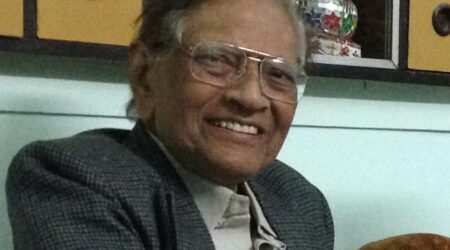Atul Vyas
Our hands are designed to carry out a variety of highly specialized tasks, so it is hardly surprising that they contain some of the most complex interlinked sequences of joints in the body. The hands are not only capable of transmitting considerable force, but also undertake extremely fine, delicate movements with great precision.
The first part of the wrist joint is the lower of the two joints between two forehand bones called – radius and ulna, the upper one being part of elbow joint.The two bones are linked by a synovial pivot joint that allows the radius to pivot around ulna, in order to rotate the hand palm down (pronation) and palm up (supination).
The bottom of this joint is sealed with a disc of fibro-cartilege that forms the upper border of the wrist joint proper, that links the cartilage lining, the base of the radius.The wrist joint is a synovial ellipsoid joint. The only other such joint in the body being in the knuckles. Its lower border is made up of three small carpal bones and the ligaments that join them, and these are linked to other small bones by further joints.This arrangement makes a wide range of movements possible, and all of them are controlled by the tension of opposing muscles and by ligaments that links bones together.
All the joints that make up the wrist are protected and stabilized by strong ligaments.
The twisting movements happen because of the supinator muscles which rotate the hand palm up, and the pronators are the muscles that rotate the hand palm down. The supinators are stronger than the pronators, which means that a right-handed person can turn his or her wrist to the right with more force than to the left.
There are many yogic interventions for making this joint healthy and strong. Here, I mention one called, “wrist rotation”.
Technique
- Stand erect and stretch arms in front of the body at shoulder level
- Keep the palms open and fingers straight throughout
- Bend the hands backward from wrist as if pressing the palms against a wall with the fingers pointing towards ceiling
- Then, bend the hands forward from wrists so that the fingers point towards the floor
- Keep the elbows straight throughout and do not bend knuckle joints or fingers
- Inhale with backward movement n exhale with forward movement
- Repeat 15 times
Benefits
- Makes hand and wrist strong
- Relieves tension due to prolonged writing, typing and other repetitive movements

Atul Vyas likes to be called a “Yoga Scientist”. He is a celebrity yoga trainer and has trained several top Hollywood and Bollywood stars. He has trained for years under many eminent yoga gurus including his illustrious mother Daya Vyas, the first lady yoga guru of India.









